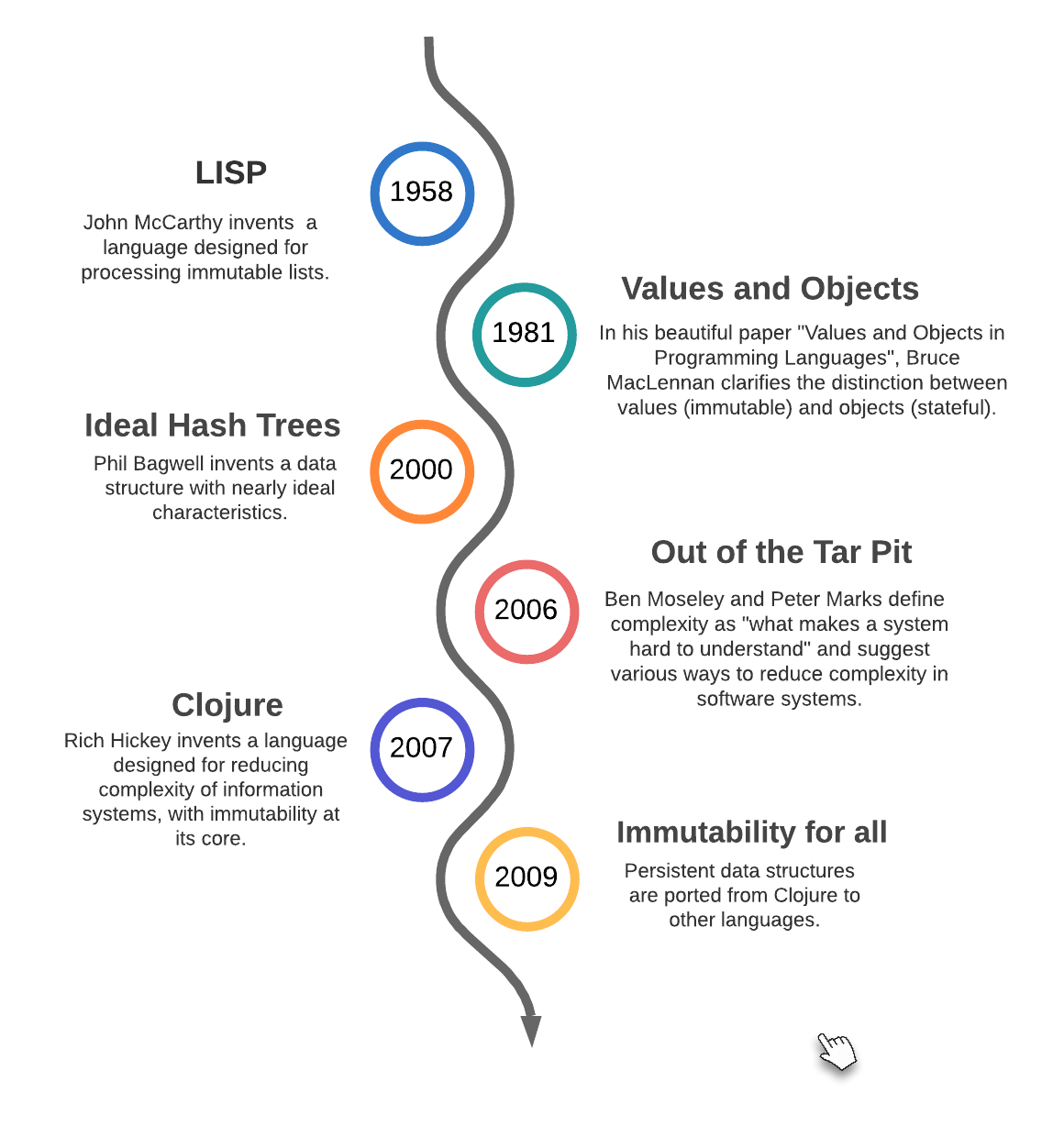Hi there! My name is Yehonathan Sharvit. I'm a software developer, author and speaker. My passion is to make interesting things easy to understand. I hope you will enjoy the articles.
Latest Articles
With data separated from code and represented with generic and immutable data structures, now comes the question of how do we express the shape of the data? In DOP, the expected shape is expressed as a data schema that is...
dop
With data separated from code and represented with generic data structures, how are changes to the data managed? DOP is very strict on this question. Mutation of data is not allowed! In DOP, changes to data are accomplished by creating...
dop
When adhering to Principle #1 of DOP, code is separated from data. DOP is not opinionated about the programming constructs to use for organizing the code, but it has a lot to say about how the data should be represented....
dop
The first principle of Data-Oriented Programming (DOP) is a design principle that recommends a clear separation between code (behavior) and data. This may appear to be a FP principle, but in fact, one can adhere to it or break it...
dop
This article is an excerpt from my book about Data-Oriented Programming.
More excerpts are available on my blog.
dop
This is an experiment I am doing about introducing a bit of self-referential stuff in Chapter 13 of "Data-Oriented Programming.
dop
Writing a technical book is much harder than writing blog posts. Writing a blog post is like running a sprint while writing a book is like running a marathon. Writing my first technical book without a publisher would have been...
dop
theory
This article is an excerpt from my book about Data-Oriented Programming.
More excerpts are available on my blog.
dop
Object-Oriented Programming is well known for allowing different classes to be called with the same interface, via a mechanism called polymorphism. It may seem that the only way to have polymorphism in a program is with objects. In fact, as...
javascript
Object-Oriented Programming is well known for allowing different classes to be called with the same interface, via a mechanism called polymorphism. It may seem that the only way to have polymorphism in a program is with objects. In fact, as...
javascript


